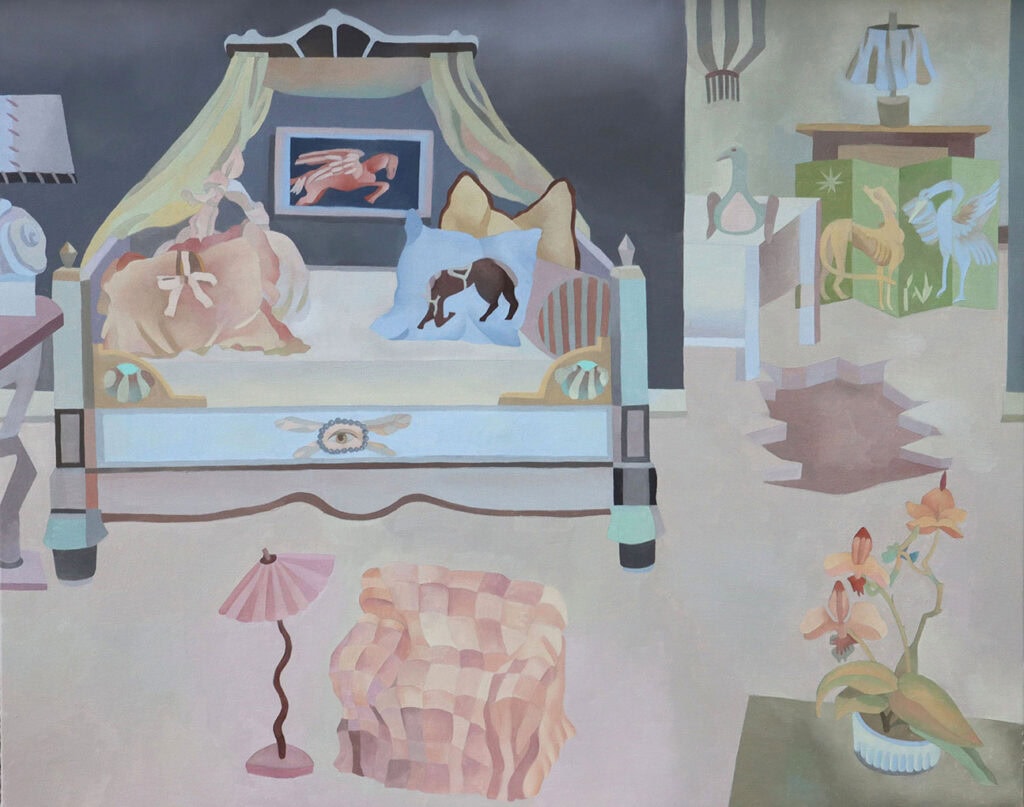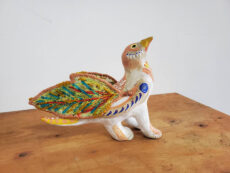Viga – Fortune Cat Family – Acrylic on Canvas – 41×31.5 cm – 2024
Shuyu Kuo _ Looks Effortless _ Acrylic on Canvas _ 70x70cm _ 2023
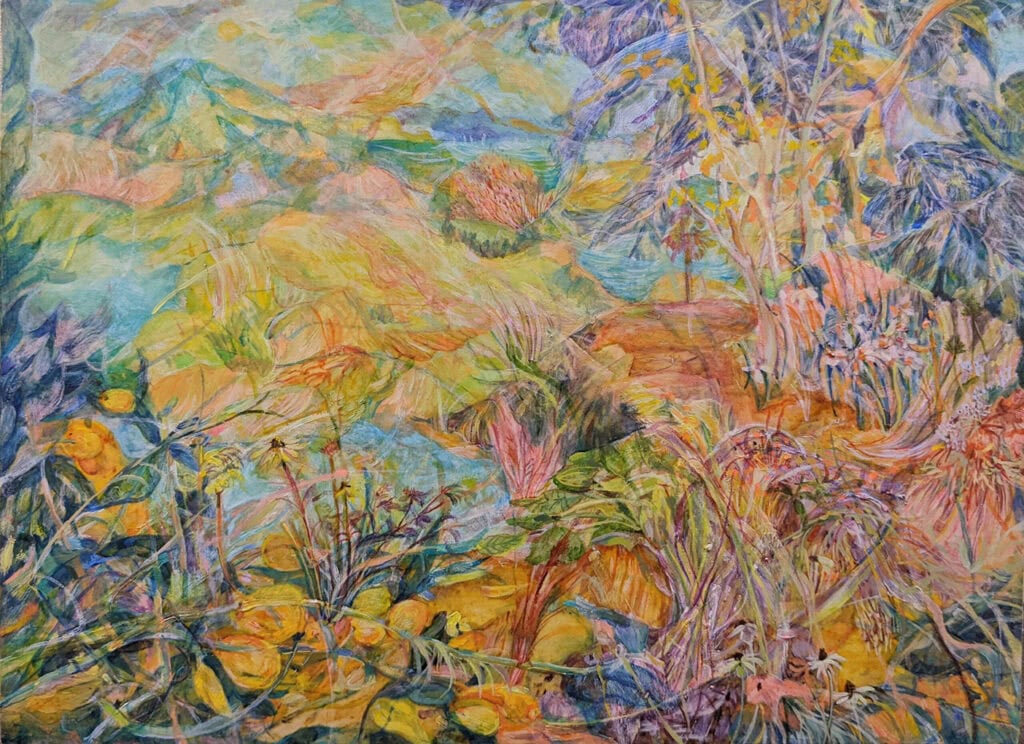
Misato Nonaka _ Pond _ Tempera, Oil on Wood _ 38×45.5cm _ 2022
Ping-en Kuo _ Lucy _ Acrylic on Wood _ 25x26cm _ 2024
Man-Chen Chu _ Hotel Story-2 _ Oil on Wood _ 16×23cm _ 2023
At the ART TAICHUNG Art Fair, San Gallery will exhibit the works of eight artists: two Japanese artists, Mariko Kobayashi and Misato Nonaka, and six Taiwanese artists, Viga, Shuyu Kuo, Ping-en Kuo, Man-Chen Chu, Bing-Ao Lee, and Yi-Jie Chou. This exhibition delves deeply into themes of happiness, emotions, memories, and nature, constructing a multi-layered perspective on contemporary society.
Viga‘s paintings feature small figures that embody human happiness. Through their portrayal, they communicate that happiness is unrelated to wealth, status, or honor, but rather found in being with loved ones, playing music, staying in a warm home, watering flowers, taking walks, and drinking tea. As Pascal said, “All of humanity’s problems stem from man’s inability to sit quietly in a room alone.” Viga’s works subtly guide modern individuals, who are lost outside, toward the source of true happiness.
In Shuyu Kuo‘s creations, the figures are clay Buddhas experiencing life’s joys and sorrows in place of the artist, allowing viewers to step into the first-person perspective and speak the truth behind a mask. These ambiguous and obscure characters package unspeakable and hidden truths, aiming to carve out a space outside the physical world to house various fragile emotions in an era that glorifies positive energy.
Misato Nonaka‘s landscapes are not of specific scenes but are created by repeatedly layering and depicting contours from different times, places, and spaces. This process imparts a sense of flow to the paintings, which she hopes will form an intangible connection with viewers. Elements from various times, histories, and regions merge during the painting process, creating a unique new landscape and a distinct sense of time and space.
For Ping-en Kuo, when people want to store a meaningful object, they often use a large box to cover a small one, layering it repeatedly. This layering creates an intimate interaction between the person and the object. On the surface, no one can tell what significance these objects hold. However, for the owner, each layer of covering is an expression of emotion and a repository of memories, making these seemingly ordinary objects unique and precious. Paintings are similar; each one is like a layered box, containing rich emotions and deep meanings.
Man-Chen Chu‘s works feature non-human characteristics and textures, distinguishing her characters from typical humans. These characters exhibit a state of unease, as if on the eve of a crisis, with eyes that rarely meet the viewer’s gaze. They have their own tasks or actions within their world, too busy to explain any motives. The noise or tranquility in the paintings seems beyond the viewer’s intervention.
Bing-Ao Lee often approaches landscapes with a sense of virtuality, flatness, and disconnection, reflecting personal perceptions of reality within temporal and spatial contexts. These images and scenes, like stars or undercurrents, are slices of the present time and space, slowly and meticulously conducting an archaeological work. He is concerned with his present location, this place, and his position within the virtual and real worlds, amidst an explosion of information and the soul’s location.
Yi-Jie Chou‘s creative themes revolve around the boudoir, referring to a woman’s living space, focusing on women’s daily lives. To her, the concept of home is a pursuit of safety and belonging. She believes that common life scenes and women’s closest relationships often reflect a longing for home. The objects people choose or the appearance of their living spaces are closely related to themselves. A room represents a person’s imagination of life and their preferences for the world, serving as both a comfort zone and a space to face the imagined self.
Mariko Kobayashi excels in using various techniques such as weaving, dyeing, knitting, and embroidery to create her works, expressing the connections between all living things in nature. Her works also lead viewers to explore how human life in the present is born and sustained by the cyclical nature of life and remind viewers that what is defined as the end of life, death, is actually the beginning of another life.
Bing-Ao Lee _ Marks, Summer Night _ Acrylic on Canvas _ 25x25cm (x2) _ 2023
Yi-Jie Chou _ Room _ Oil Painting _ 91cm×72.5cm _ 2024
2024 ART TAICHUNG Art Fair @ Millennium Hotel Taichung
✦ ROOM | 1018
✦ Exhibition Period | July 19 (Fri) – July 21 (Sun), 2023, 12:00-19:00 (Sunday open until 18:00 only)
✦ VIP Preview | July 18 (Thu), 2023, 15:00-19:00
✦ Participating Artists | Viga, Mariko Kobayashi, Shuyu Kuo, Misato Nonaka, Ping-en Kuo, Man-Chen Chu, Bing-Ao Lee, Yi-Jie Chou

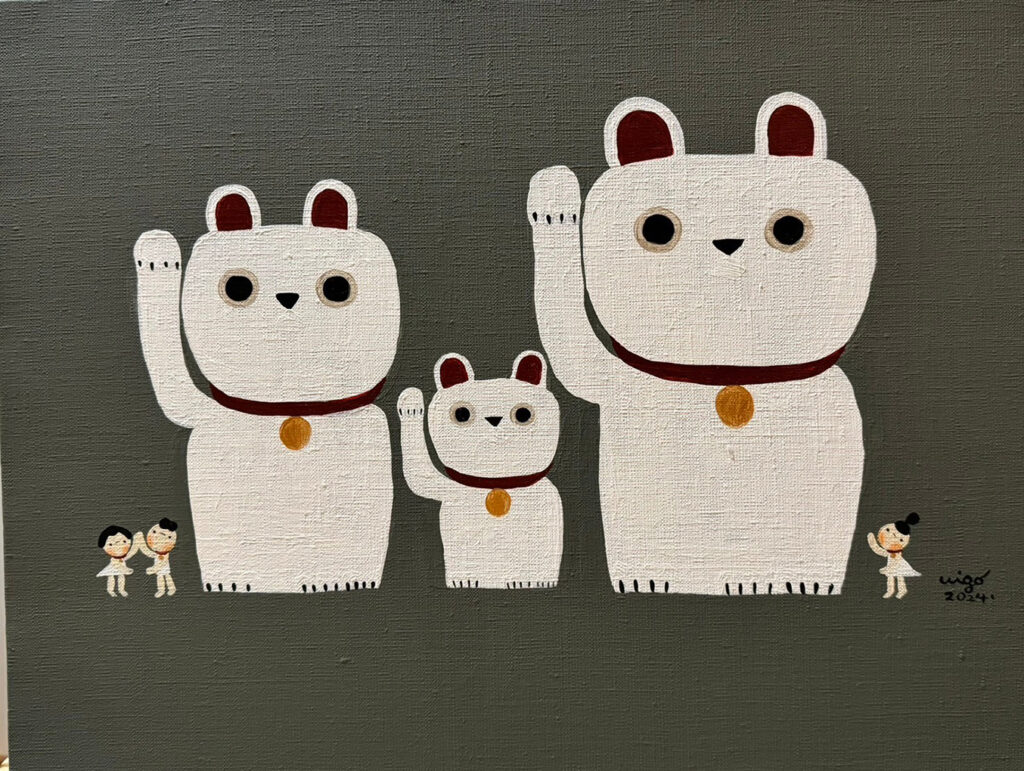
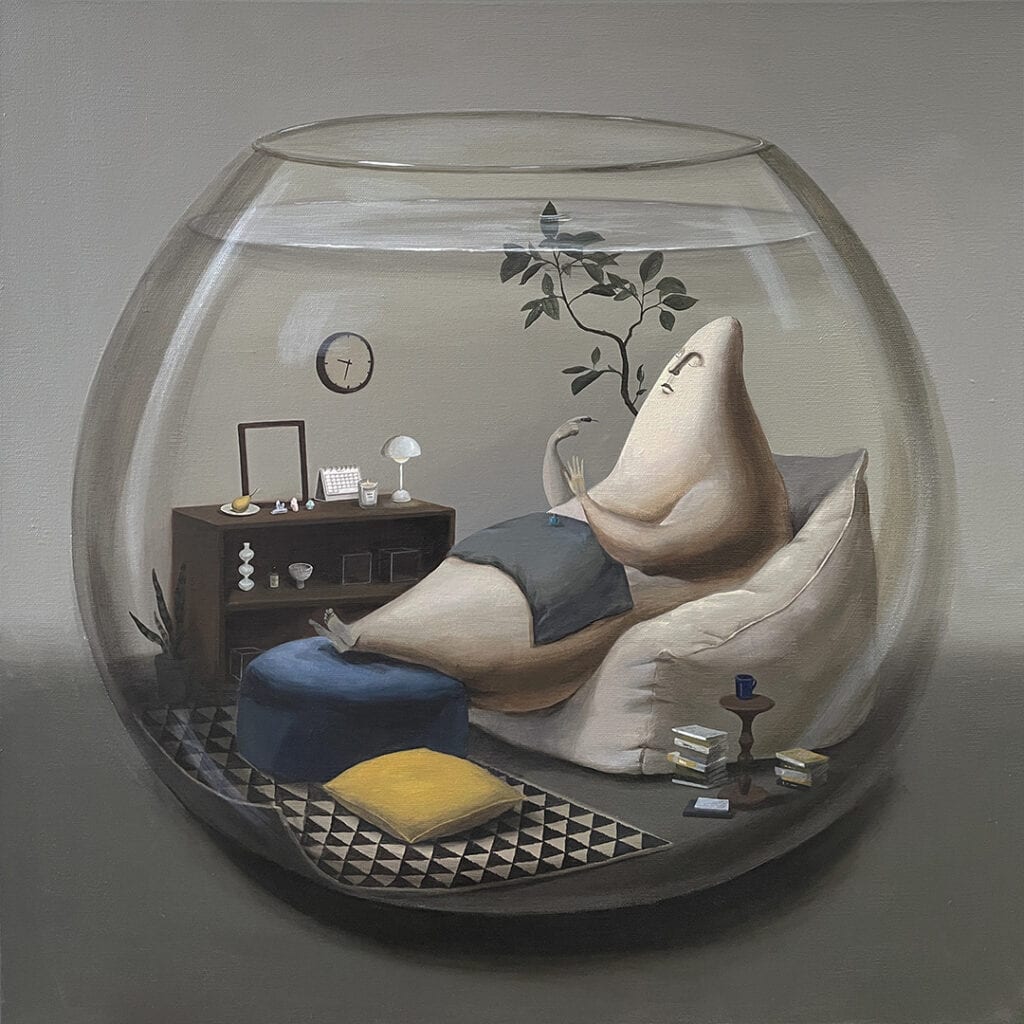
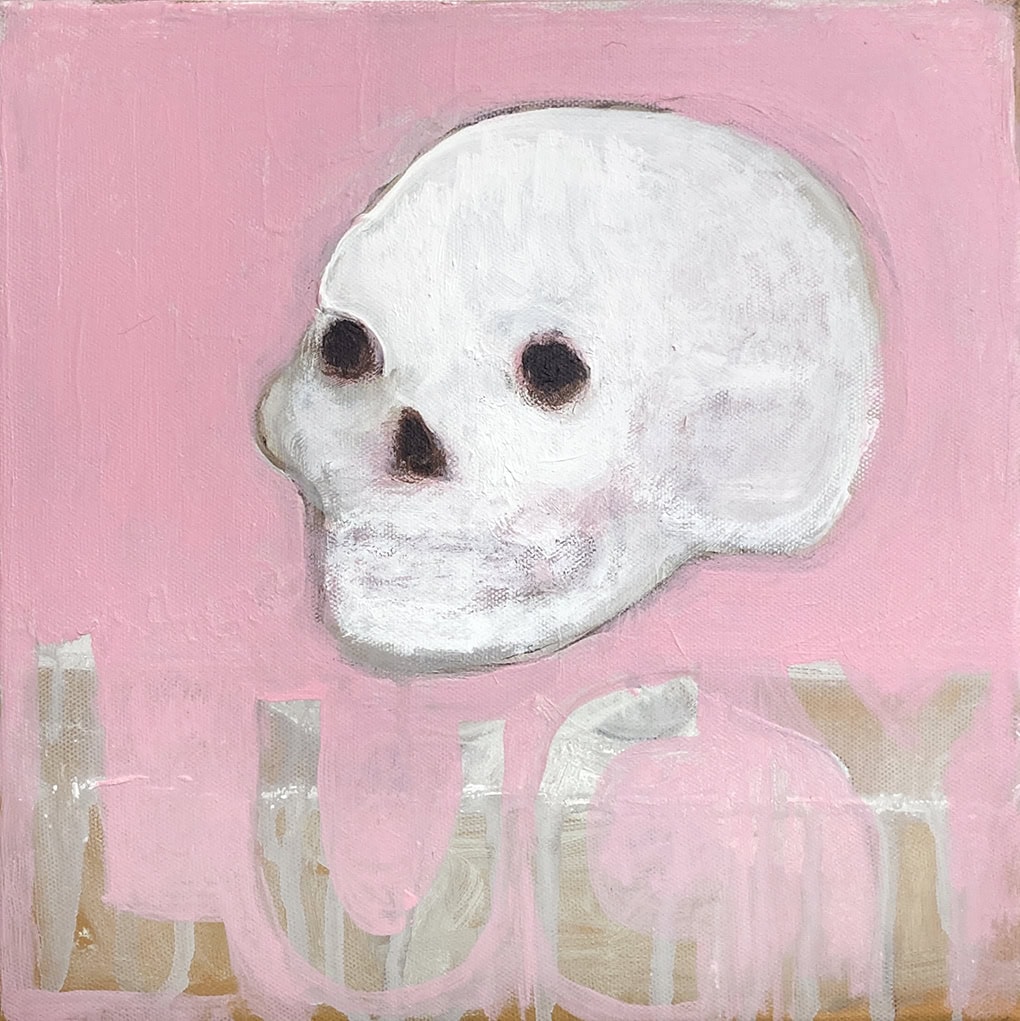
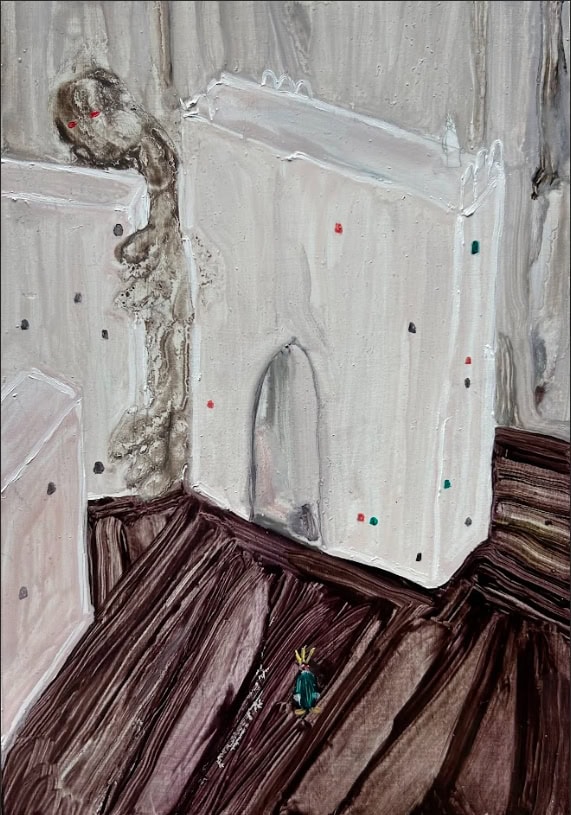
_2023-1024x653.jpg)
